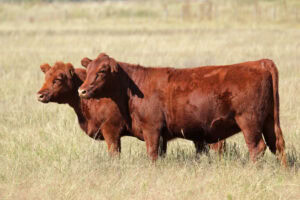Just a few generations ago nearly all heifers spent part of the year on pasture. Today, most farmers choose not to implement grazing. But there’s good reason for farms to consider going back to their roots with grazing heifers. And for one farmer in Reedsburg, it’s really paying off.
Connor Laukant is making waves in the agricultural community with his innovative approaches to sustainable farming and grazing. With a focus on rotational grazing, Laukant is on track to graze approximately 900 acres in southwest Wisconsin this summer.
Laukant’s operation encompasses a range of enterprises. These include a cow herd, a bred heifer enterprise, custom grazing services, and a portable livestock shade company. Each of these ventures plays a key role in his farming approach, which prioritizes soil health, animal welfare, and environmental sustainability.
“I believe in giving the land and the livestock the best possible care,” Laukant explains. “That’s why rotational grazing and diversified enterprises are at the heart of what we do.”
One of Laukant’s key initiatives is his bred heifer enterprise. He established this to optimize the productivity of his cow herd while catering to the needs of fellow farmers. By marketing bred heifers to those interested in grazing, Laukant has expanded his network and also contributed to the broader agricultural community’s sustainability efforts.
Another innovative venture is Serrated Shade LLC, Laukant’s portable livestock shade company. Recognizing the importance of mitigating heat stress for grazing livestock, Laukant and his brother developed portable shade units equipped with mineral feeders. This initiative not only benefits Laukant’s own operation but also offers a solution for other farmers seeking to enhance animal welfare and productivity.
When it comes to grazing management practices, Laukant emphasizes the importance of daily rotation systems. This helps to promote grass recovery and provide high-quality forage for his livestock. His pastures boast a diverse mix of clovers, grasses, and alfalfa, with a focus on orchard grass and red and white clover. By carefully managing stocking densities and grazing periods, Laukant ensures optimal pasture health while maximizing cattle performance.
“If you aren’t rotationally grazing or managing your pastures at this point, I don’t know what you’re doing,” he says. “It just doesn’t make sense to do it any other way.”


